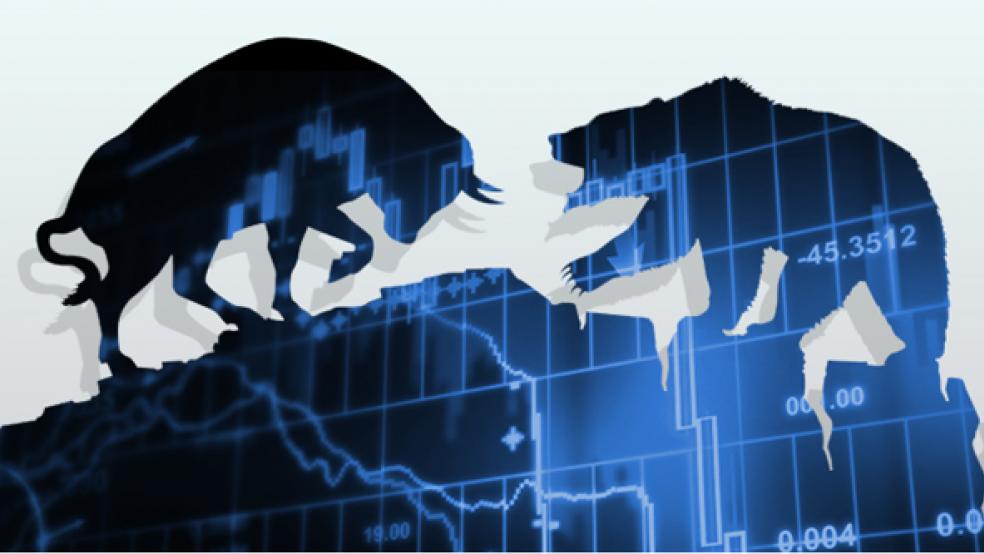Has March Madness infected the stock market? The S&P 500 had raced past the 1,400 level before dropping back below that mark early Thursday. Even with the latest pullback, the index has more than doubled in value since hitting bottom during the financial crisis three years ago. Given that the average annual market gain, according to the folks who make a living tracking these things, is closer to 7 percent, that’s a great feat.
On the heels of that performance – achieved despite tremendous volatility and uncertainty surrounding the prospect of another recession or even a second global financial crisis triggered by the European government debt mess and the plight of that continent’s financial institutions – investors are still debating whether that rally can keep going. Fresh concerns about economic growth are only adding to the questions.
RELATED: Execs Are Dumping Stock. Is It Time to Sell?
Certainly, the rally has already been the subject of plenty of worry and angst. For every argument that the bulls make in support of their conviction that the market’s runup – and particularly its most recent jump since the lows of last October – is for real, a counter-argument is readily presented by skeptics:
• True, stocks are reasonably priced, on average; hey, even Apple (AAPL), whose stock price has nearly doubled from its 52-week to low to trade at around $618 a share, still only commands 17.6 times earnings.
• Yes, the housing market seems to be beginning a recovery – but it’s climbing out of a deep trough.
• Sure, the economy looks healthier – but the rate of corporate earnings gains is forecast to be smaller going forward than it was last year, and there are still big economic headwinds, like the stubbornly high rate of long-term unemployment.
Folks working within the same firms don’t even agree with each other. For instance, Sameer Samana, the international investment strategist at Wells Fargo Advisors, earlier this week argued that the stock market now feels overbought and its advance “very similar to last year’s”; that 2011 rally, of course, ended in a summer stock market rout. The environment, Samana suggests, is reminiscent of one in which “the easy money has probably been made and the bulk of the rally is probably behind us. We see this as an opportunity for traders to trim positions and take profits.”
Meanwhile, Gary Thayer, Wells Fargo’s chief macro strategist, suggests that an improvement in investor sentiment is likely to continue to buoy stocks; this month, he argued that the bull market has further to run and that investors should be buying stocks on any pullbacks, such as the days last week when the market ended up in the red.
Ultimately, investors trying to figure out whether the rally can possibly keep going may have to resort to reading the tea leaves – those tiny signals that may prove critical (but only with 20-20 hindsight) or that may end up being irrelevant.
Sam Stovall of S&P Capital IQ finds comfort in pointing out that the back-to-back gains of about 11 percent in the fourth quarter of 2011 and the first quarter of this year don’t necessarily mean that the good times have to end. The S&P 500 has, he says, gained at least 10 percent in the first quarter of a year eight times since 1945. In six of those time, the gains were followed by another advance in the second quarter of the year. (Henry Ford may not have drawn comfort from this, given his conviction that “history is bunk,” but lots of investors trust historical patterns.)
The monthly reading of investor sentiment put out by State Street Associates is another bullish sign. That index, crafted by Harvard University professor Kenneth Froot along with State Street’s Paul O’Connell, measures investor confidence or risk appetite by analyzing actual buying or selling patterns. The fact that the confidence index rose in March may be less significant than some of the data that lies behind that finding: indications that big institutional investors have started buying more. Except in major market panics (like the events of 2008), institutional investors try to remain as unemotional as is possible in such an emotion-driven place as the stock market: They buy and sell based on their analysis of fundamentals.
“Institutions have been content to play the role of liquidity provider over much of the recent rally, taking the other side of non-institutional trades,” Froot said in a statement accompanying the monthly State Street release. “This month they have engaged in more liquidity-taking behavior, adding further to core equity positions.”
Perhaps most intriguing is the fact that the rally may be broader than it might appear looking only at the S&P 500 index. True, the big winners among mutual funds have been the large cap growth funds – not surprisingly, as those are the kinds of funds most likely to have owned shares of Apple, which has driven a lot of the price gains. And yes the 100 largest stocks in the S&P 500 have been among the biggest winners. It’s all about embracing instead of shunning risk: Citigroup’s (C) stock is sharply higher so far this year. But risk taking has spread down throughout the market, say some pundits, with smaller-cap stocks also recording sizeable gains.
If the rally isn’t over until the fat lady sings, odds are that she is only starting to warm up for her performance.






